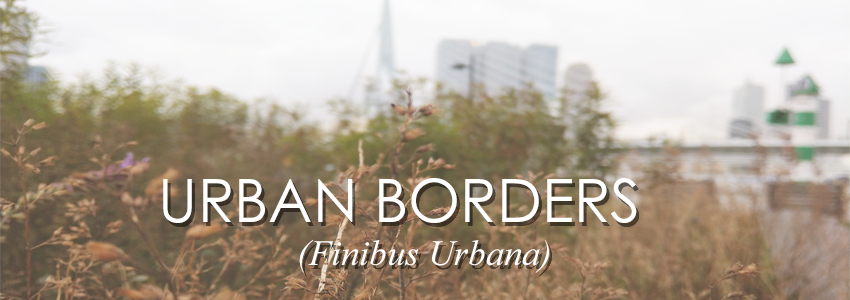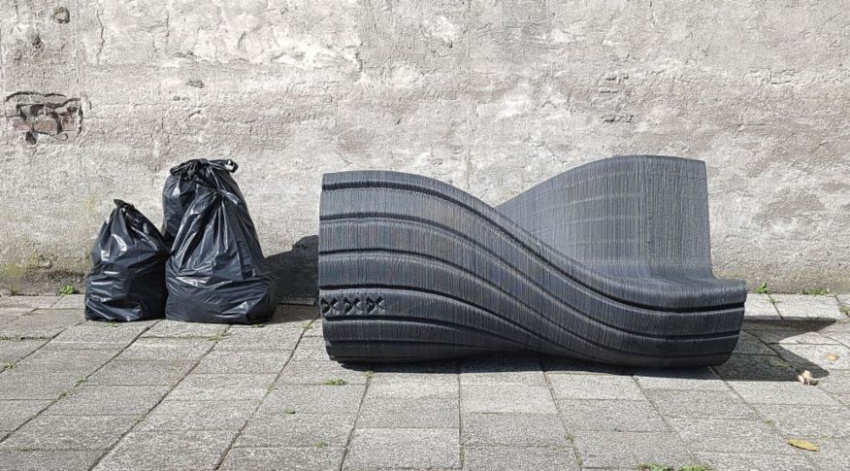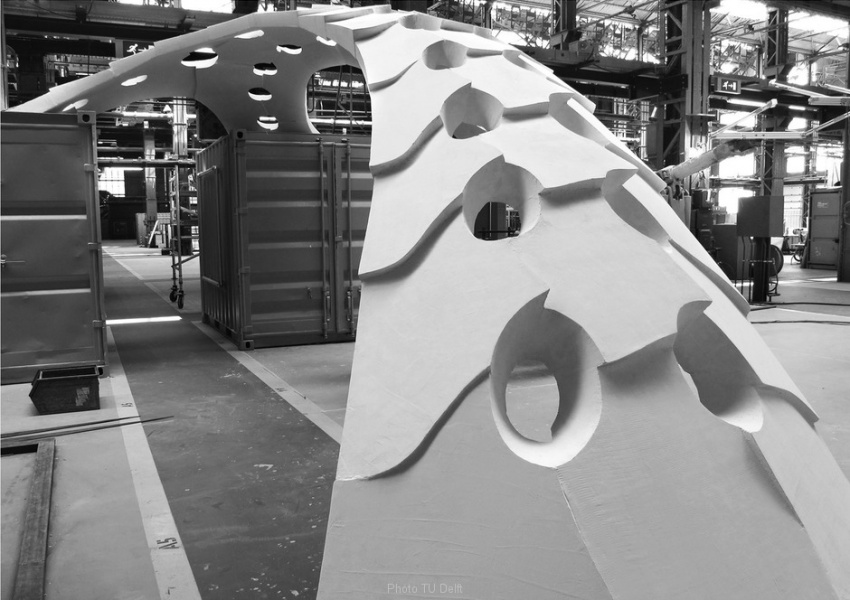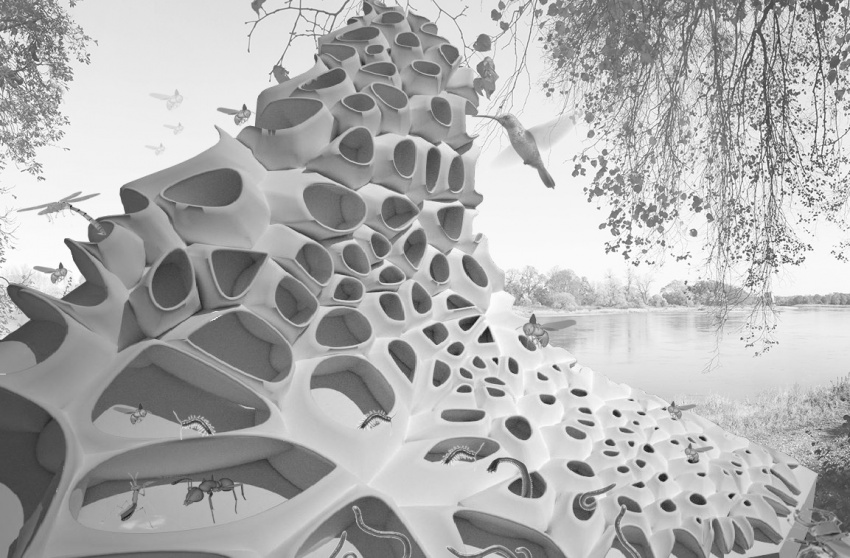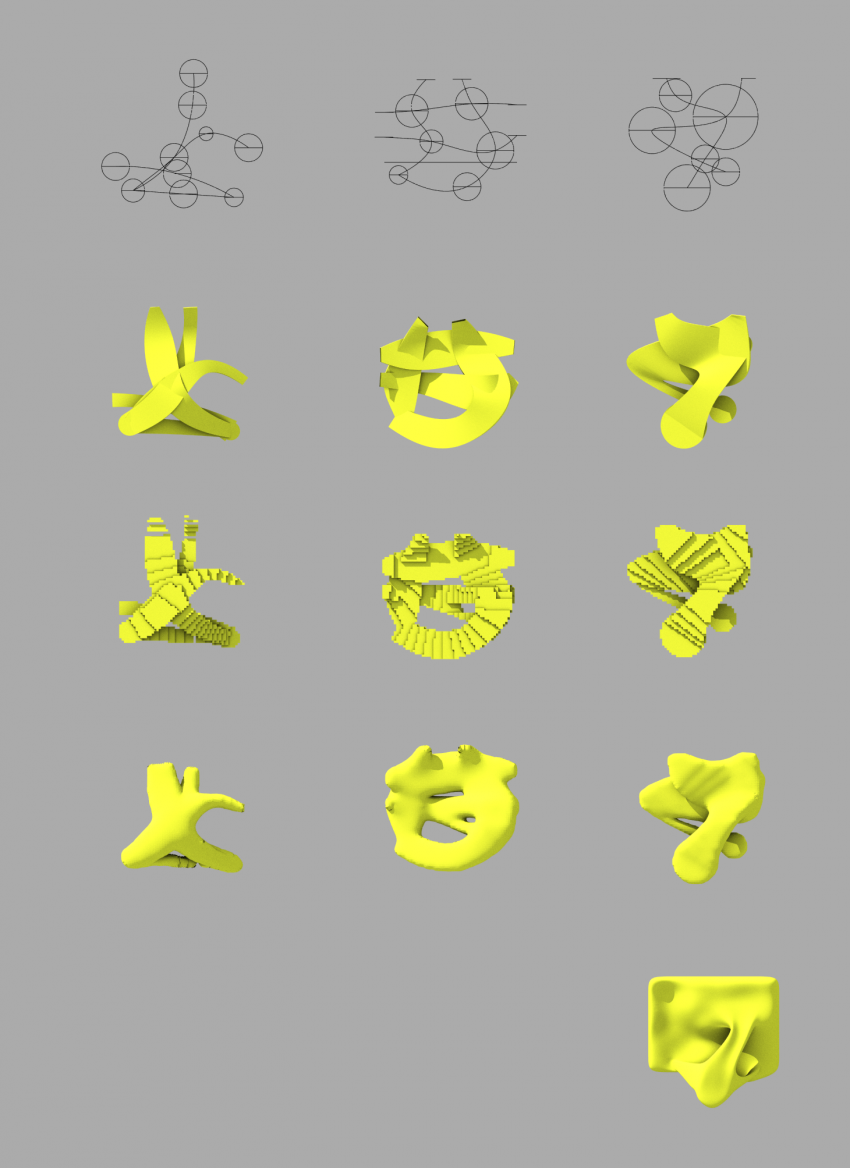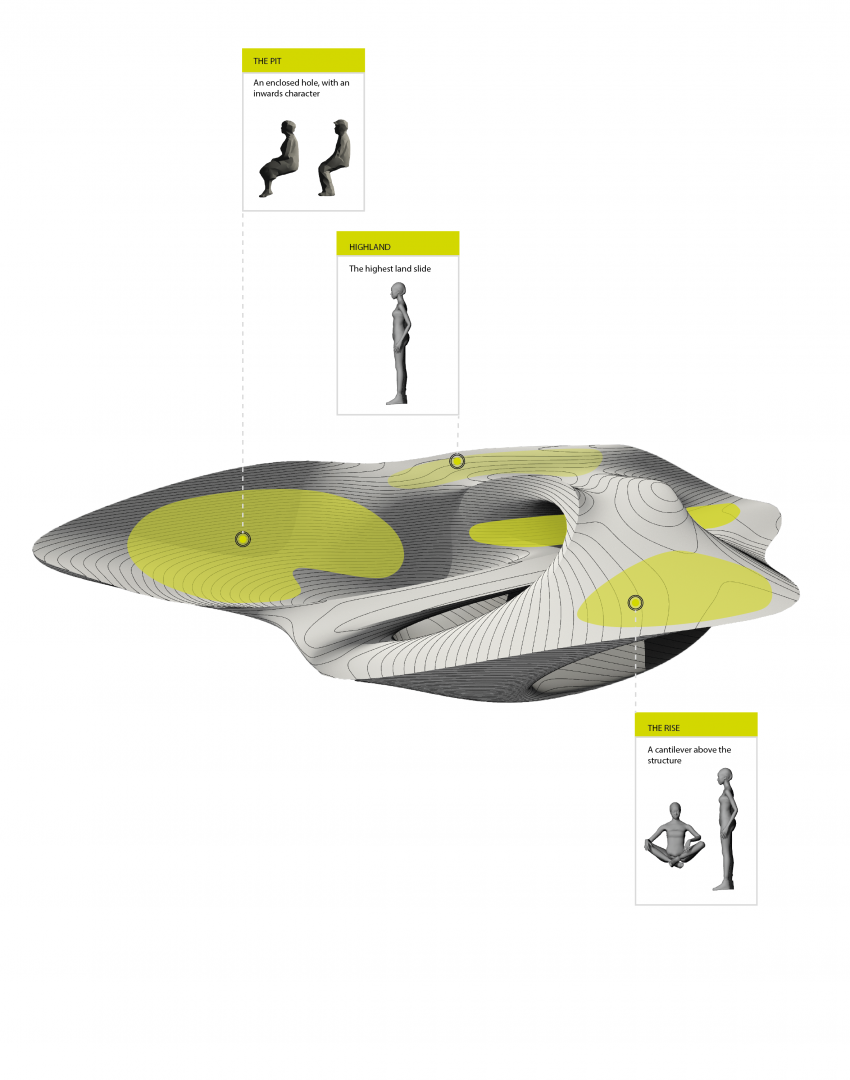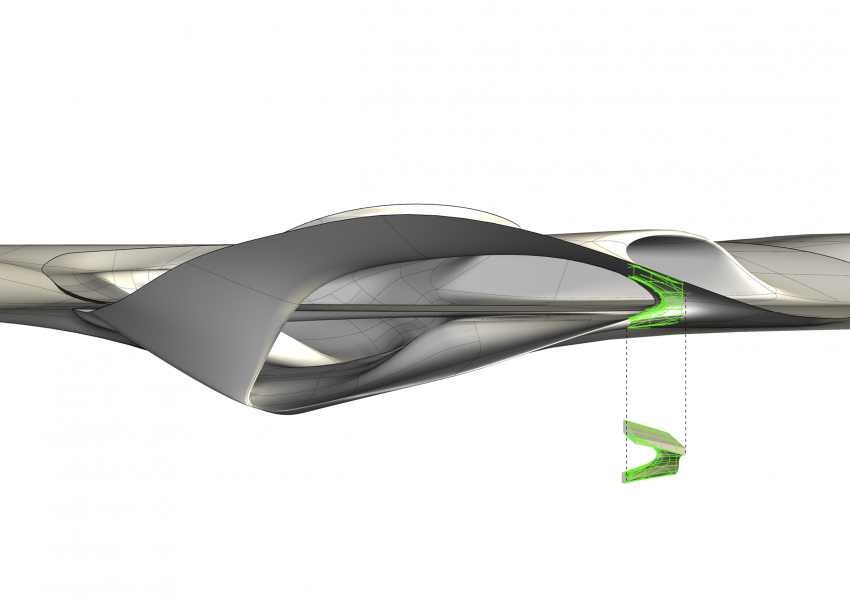Difference between revisions of "project12:W3MSc1TUDG2:MEDIA"
| (26 intermediate revisions by 2 users not shown) | |||
| Line 44: | Line 44: | ||
# [[#PROJECTION AND FUTURE GOALS|PROJECTION AND FUTURE GOALS]] | # [[#PROJECTION AND FUTURE GOALS|PROJECTION AND FUTURE GOALS]] | ||
<br><br><br> | <br><br><br> | ||
| + | |||
| + | <html><iframe width="850" height="478" src="https://www.youtube.com/embed/7jwX3qD7qHE" frameborder="0" gesture="media" allowfullscreen></iframe></html> | ||
| + | |||
=='''D2RP&O RESEARCH'''== | =='''D2RP&O RESEARCH'''== | ||
<br><div style="text-align:justify"> | <br><div style="text-align:justify"> | ||
| − | We began our research by searching for different references of urban furniture and parametric design, specially of examples that had a relationship to water and nature in order to reinforce our guiding concept of an object that could serve both humans and insects. We also looked up for references of materiality, hybridity and assembly, for all of these would inform the production method we would finally use. Additionally, we researched human anatomical factors and insects necessities to produce an object that conformed to them. Many of our sources and examples came from the lectures we attended and from projects from previous TU Delft students in the Hyperbody studio. </div> | + | We began our research by searching for different references of urban furniture and parametric design, specially of examples that had a relationship to water and nature in order to reinforce our guiding concept of an object that could serve both humans and insects. We also looked up for references of materiality, hybridity and assembly, for all of these would inform the production method we would finally use. Additionally, we researched human anatomical factors and insects necessities to produce an object that conformed to them. Many of our sources and examples came from the lectures we attended and from projects from previous TU Delft students in the Hyperbody studio. <br><br> |
| + | [[File:Lop.png|850px|thumb|center|porosity reference]] </div> | ||
<br><br><br> | <br><br><br> | ||
[[#Top|Back to top]] | [[#Top|Back to top]] | ||
| Line 61: | Line 65: | ||
=='''LECTURE 2: 3D PRINTING WITH PLASTIC'''== | =='''LECTURE 2: 3D PRINTING WITH PLASTIC'''== | ||
<br><div style="text-align:justify"> | <br><div style="text-align:justify"> | ||
| − | The second lecture was about a PHd research on the flexible potential of recycled plastic as the base for 3D printing and the role of the final users in the process itself. There was an emphasis on the circularity of the material and on the harmful effects of environmental contamination when plastic is discarded instead. The most interesting example was a 1:1 prototype of a 3D printed chair that was later located in different public spaces in Rotterdam. The interaction between the object and the users was mapped and recorded, showing the positive response of the people around it. We found both the production method and user interaction applicable to our proposal.<br> | + | The second lecture was about a PHd research on the flexible potential of recycled plastic as the base for 3D printing and the role of the final users in the process itself. There was an emphasis on the circularity of the material and on the harmful effects of environmental contamination when plastic is discarded instead. The most interesting example was a 1:1 prototype of a 3D printed chair that was later located in different public spaces in Rotterdam. The interaction between the object and the users was mapped and recorded, showing the positive response of the people around it. We found both the production method and user interaction applicable to our proposal.<br><br> |
[[File:xyz.jpg|850px|thumb|center|3D printed plastics]] | [[File:xyz.jpg|850px|thumb|center|3D printed plastics]] | ||
</div> | </div> | ||
| Line 71: | Line 75: | ||
<br><div style="text-align:justify"> | <br><div style="text-align:justify"> | ||
This lecture provided us with several interesting examples of parametric design materialised through different methods of robotic production. Jelle has been involved in many projects and workshops that defy the conventional methods and approaches in the industry of robotic production and 3D printing. Among these is the open-ended, evolutionary computing design of a parametric chair in which the objective was to use the minimum amount of material in relation to the loading capacity. He was also involved in workshops that innovated in the use of hot-wire cutting by bending the wire using 2 kuka robots in each extreme, thus achieving a double curvature in the material. Other innovations mentioned were the use of diamond-cladded cable to cut through carrara marble during an intensive workshop in Italy, the use of EPS+fiberglass+Hot wire cut shells to create a compression-only domed arc, among others. <br><br> It was also interesting to hear about his critical views of today’s technological advances. Jelle valued the way robots can increase the value of primal products whilst also commenting on how some projects are over-complicated just for the sake of trying new methods of production. Could the future of 3D printing and Robotic Production merge into the sector of pre-fabricated elements or continue expanding into different sectors of construction? <br><br> | This lecture provided us with several interesting examples of parametric design materialised through different methods of robotic production. Jelle has been involved in many projects and workshops that defy the conventional methods and approaches in the industry of robotic production and 3D printing. Among these is the open-ended, evolutionary computing design of a parametric chair in which the objective was to use the minimum amount of material in relation to the loading capacity. He was also involved in workshops that innovated in the use of hot-wire cutting by bending the wire using 2 kuka robots in each extreme, thus achieving a double curvature in the material. Other innovations mentioned were the use of diamond-cladded cable to cut through carrara marble during an intensive workshop in Italy, the use of EPS+fiberglass+Hot wire cut shells to create a compression-only domed arc, among others. <br><br> It was also interesting to hear about his critical views of today’s technological advances. Jelle valued the way robots can increase the value of primal products whilst also commenting on how some projects are over-complicated just for the sake of trying new methods of production. Could the future of 3D printing and Robotic Production merge into the sector of pre-fabricated elements or continue expanding into different sectors of construction? <br><br> | ||
| − | |||
[[File:jelle.jpg|850px|thumb|center|overview]] | [[File:jelle.jpg|850px|thumb|center|overview]] | ||
<br> In terms of the contribution to our own project, we were particularly inspired by the assembly methods in the domed-arc, because we’re interested in finding a similar method of assembly for our urban furniture. We were also compelled by the apparently endless possibilities that these technologies offer, specially in terms of production. It is necessary to consider the methods of materialisation without letting that limit what you design because the boundaries can always be pushed further, as we saw on this lecture.</div> | <br> In terms of the contribution to our own project, we were particularly inspired by the assembly methods in the domed-arc, because we’re interested in finding a similar method of assembly for our urban furniture. We were also compelled by the apparently endless possibilities that these technologies offer, specially in terms of production. It is necessary to consider the methods of materialisation without letting that limit what you design because the boundaries can always be pushed further, as we saw on this lecture.</div> | ||
| Line 79: | Line 82: | ||
=='''W2 @ DIA'''== | =='''W2 @ DIA'''== | ||
<br><div style="text-align:justify"> | <br><div style="text-align:justify"> | ||
| − | The design and prototyping workshop at DIA gave us several new skills and knowledge that have helped us in the next steps of the semester. Mainly, it served the important purpose of being the starting point of our design concept of humans+nature. For the micro scale in our current project, we are also using grasshopper scripts and attractor points that follow parameters such as the strength lines (compression and tension) and location of human/insect habitated regions to determine the surface tectonics (varying gradients of porosity). It was also an opportunity to learn about materialisation techniques through robotic production, including the necessary translation of robotic movements into codes that are later used as input in the Hot-wire cutting and milling Kuka tools. <br> [[File:Render worms (1).jpg|850px|thumb|center|render of prototype]] <br> [[File:IMAG0468.jpg|850px|thumb|center|EPS prototype]] </div> | + | The design and prototyping workshop at DIA gave us several new skills and knowledge that have helped us in the next steps of the semester. Mainly, it served the important purpose of being the starting point of our design concept of humans+nature. For the micro scale in our current project, we are also using grasshopper scripts and attractor points that follow parameters such as the strength lines (compression and tension) and location of human/insect habitated regions to determine the surface tectonics (varying gradients of porosity). It was also an opportunity to learn about materialisation techniques through robotic production, including the necessary translation of robotic movements into codes that are later used as input in the Hot-wire cutting and milling Kuka tools. <br><br> [[File:Render worms (1).jpg|850px|thumb|center|render of prototype]] <br> [[File:IMAG0468.jpg|850px|thumb|center|EPS prototype]] </div> |
<br><br><br> | <br><br><br> | ||
[[#Top|Back to top]] | [[#Top|Back to top]] | ||
| Line 91: | Line 94: | ||
[[File:voxels.jpg|850px|thumb|center|voxels]] | [[File:voxels.jpg|850px|thumb|center|voxels]] | ||
<br> | <br> | ||
| + | [[File:tsplined.jpg|850px|thumb|center|volume]] | ||
| + | <br> | ||
| + | [[File:ANALYSE PEOPLE DAFNE-02-02-02-01-01.png|850px|thumb|center|mapping 1]] | ||
| + | <br> | ||
| + | [[File:ANALYSE PEOPLE DAFNE-02-02-02-01-02.png|850px|thumb|center|mapping 2]] | ||
| + | <br> | ||
| + | [[File:FRAGMENT LOCATION.png|850px|thumb|center|fragment]] | ||
| + | <br> | ||
| + | [[File:Render 011.jpg|850px|thumb|center|surface and volume tectonics]] | ||
| + | <br> | ||
| + | [[File:A.png|850px|thumb|center|3D printed prototype]] | ||
| + | <br> | ||
| + | [[File:E.png|850px|thumb|center|3D printed prototype]] | ||
| + | <br> | ||
| + | [[File:SegmentHybridFarmers.png|850px|thumb|center|3D printed segment]] | ||
<br> | <br> | ||
<div style="text-align:justify"> | <div style="text-align:justify"> | ||
| Line 100: | Line 118: | ||
=='''PROJECTION AND FUTURE GOALS'''== | =='''PROJECTION AND FUTURE GOALS'''== | ||
<br><div style="text-align:justify"> | <br><div style="text-align:justify"> | ||
| − | For the coming weeks we have many objectives some of which we’ve already began working on, including the adaptation of the script to better suit the concept of connection with nature by including the parametric mapping of the insects movement. We also plan to design the surrounding landscape with more coherence to the object, following the isocurves to develop a seamless merging into one another and into the location itself. Finally, we are in the process of adapting the script to improve the interlocking connections and the assembly method as a whole to make it more integrated into the design. We’ll also adjust it to suit the tectonics for the humans, the insects and the structural performance considering macro, meso and micro levels.</div> | + | For the coming weeks we have many objectives some of which we’ve already began working on, including the adaptation of the script to better suit the concept of connection with nature by including the parametric mapping of the insects movement. We also plan to design the surrounding landscape with more coherence to the object, following the isocurves to develop a seamless merging into one another and into the location itself. Finally, we are in the process of adapting the script to improve the interlocking connections and the assembly method as a whole to make it more integrated into the design. We’ll also adjust it to suit the tectonics for the humans, the insects and the structural performance considering macro, meso and micro levels.<br><br> |
| + | [[File:Topview.jpg|850px|thumb|center|artificial landscape]] | ||
| + | [[File:20171219 perspective 2.jpg|850px|thumb|center|artificial landscape]] | ||
| + | <br> </div> | ||
<br><br><br> | <br><br><br> | ||
[[#Top|Back to top]] | [[#Top|Back to top]] | ||
| Line 106: | Line 127: | ||
---- | ---- | ||
| + | |||
| + | <html><iframe width="850" height="478" src="https://www.youtube.com/embed/DjsuquLqTDA" frameborder="0" gesture="media" allowfullscreen></iframe></html> | ||
Latest revision as of 14:49, 20 December 2017
MSc1 TUD: G2
MEDIA STUDIES
- D2RP&O RESEARCH
- LECTURE 1: ENVIRONMENTAL INTERACTION
- LECTURE 2: 3D PRINTING WITH PLASTIC
- LECTURE 2: 3D PRINTING WITH PLASTIC
- W2 @ DIA
- W3 @ TUD
- PROJECTION AND FUTURE GOALS
D2RP&O RESEARCH
We began our research by searching for different references of urban furniture and parametric design, specially of examples that had a relationship to water and nature in order to reinforce our guiding concept of an object that could serve both humans and insects. We also looked up for references of materiality, hybridity and assembly, for all of these would inform the production method we would finally use. Additionally, we researched human anatomical factors and insects necessities to produce an object that conformed to them. Many of our sources and examples came from the lectures we attended and from projects from previous TU Delft students in the Hyperbody studio.
LECTURE 1: ENVIRONMENTAL INTERACTION
LECTURE 2: 3D PRINTING WITH PLASTIC
The second lecture was about a PHd research on the flexible potential of recycled plastic as the base for 3D printing and the role of the final users in the process itself. There was an emphasis on the circularity of the material and on the harmful effects of environmental contamination when plastic is discarded instead. The most interesting example was a 1:1 prototype of a 3D printed chair that was later located in different public spaces in Rotterdam. The interaction between the object and the users was mapped and recorded, showing the positive response of the people around it. We found both the production method and user interaction applicable to our proposal.
LECTURE 3: JELLE FERINGA
This lecture provided us with several interesting examples of parametric design materialised through different methods of robotic production. Jelle has been involved in many projects and workshops that defy the conventional methods and approaches in the industry of robotic production and 3D printing. Among these is the open-ended, evolutionary computing design of a parametric chair in which the objective was to use the minimum amount of material in relation to the loading capacity. He was also involved in workshops that innovated in the use of hot-wire cutting by bending the wire using 2 kuka robots in each extreme, thus achieving a double curvature in the material. Other innovations mentioned were the use of diamond-cladded cable to cut through carrara marble during an intensive workshop in Italy, the use of EPS+fiberglass+Hot wire cut shells to create a compression-only domed arc, among others.
It was also interesting to hear about his critical views of today’s technological advances. Jelle valued the way robots can increase the value of primal products whilst also commenting on how some projects are over-complicated just for the sake of trying new methods of production. Could the future of 3D printing and Robotic Production merge into the sector of pre-fabricated elements or continue expanding into different sectors of construction?
In terms of the contribution to our own project, we were particularly inspired by the assembly methods in the domed-arc, because we’re interested in finding a similar method of assembly for our urban furniture. We were also compelled by the apparently endless possibilities that these technologies offer, specially in terms of production. It is necessary to consider the methods of materialisation without letting that limit what you design because the boundaries can always be pushed further, as we saw on this lecture.
W2 @ DIA
W3 @ TUD
Once we had defined different parameters to inform our design, we began the macro form-finding process. Our first attempts were based on the use of lofted-human-adapted curves in Rhino following certain geometric patterns such as circles or archs. However, these were not successful in producing a three dimensional object. After receiving feedback from our tutors we decided to change our approach and decided to generate an object that adapted to the existing context like a landscape (our main reference for this was one of the Hyperbody studio previous projects, a pier/sitting area connecting the land with the water). We used voxels (volume+pixels) to define the scale and distribution of activities in each part of the object and afterwards we used the Rhino T-Splines add-on to replicate and refine this volumetric distribution. To complement the resulting form, we also re-modelled the surroundings to create a seamless merging between the object and the context. The macro scale of this form was further refined by using the human scale generating sitting and lying areas.
Afterwards we applied grasshopper scripts on the extracted segment to develop the micro scale of porosity, taking into consideration the following references. The distribution and scale of porosity was based upon attractor points according to the mapping of activities (both for insects and humans) and to the compression and tension strength lines.
Finally, we researched on different methods of both production and assembly, both for the prototype and for the materialisation of the 1:1 object as a whole. We found several interesting examples and references but due to the time limits of the workshop, we assembled the first 1:20 3D printed prototype in a 3 parts ensemble connected by basic positive-negative cylinders. We also 3D printed a 1:200 model of the general object with the Ultimaker machine.
PROJECTION AND FUTURE GOALS
For the coming weeks we have many objectives some of which we’ve already began working on, including the adaptation of the script to better suit the concept of connection with nature by including the parametric mapping of the insects movement. We also plan to design the surrounding landscape with more coherence to the object, following the isocurves to develop a seamless merging into one another and into the location itself. Finally, we are in the process of adapting the script to improve the interlocking connections and the assembly method as a whole to make it more integrated into the design. We’ll also adjust it to suit the tectonics for the humans, the insects and the structural performance considering macro, meso and micro levels.
